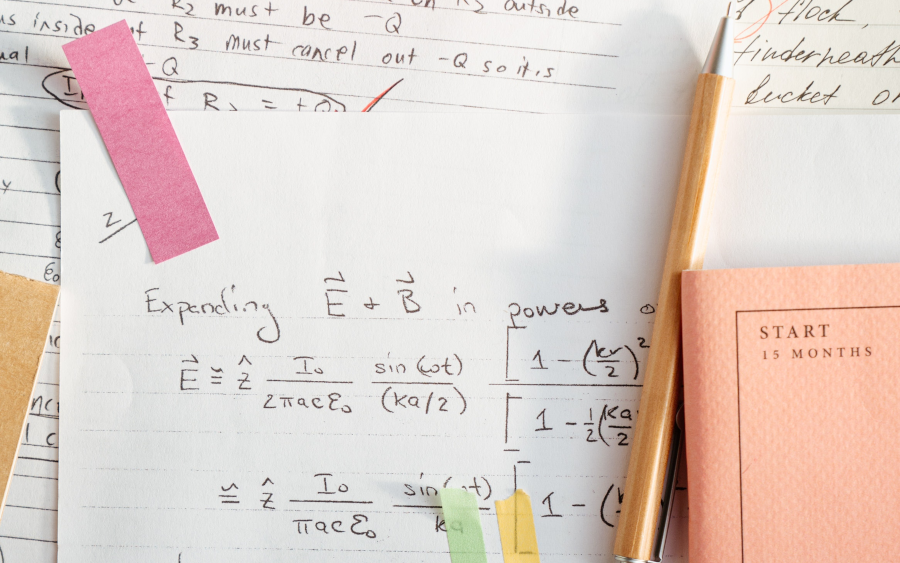
Mathematics is a subject that creates many negative emotions. One of the main difficulties for mathematics teachers is fostering a positive attitude toward learning mathematics. Hence, teachers should be conscious of students’ affective feelings and interrelations of those in learning mathematics to operate more effective strategies in teaching and improve students’ mathematics learning by reducing their opposing views.
College math is easily manageable and might even turn out to be fun if you follow our tips for acing the math requirement:
Practice as much as you can
Sometimes, students will seem like they know a concept, but they struggle through the process when attempting to solve a problem themselves. Math is a hands-on subject. You cannot just “learn” chapters; you must understand concepts and then keep practicing. It is ideal to begin practicing right from day one. That way, you will be fully practiced by the time the exam arrives. When you study content-heavy subjects, you can slip in some math practice, so it doesn’t get overwhelming.
Lack of understanding the basic concepts
Your basics are everything in Maths. Even if you are a college student, you need to have a strong foundation in grades 9 through 12—most classes in math build on previous ones. If your foundation is not as practical as you would like, then keep going back and practicing sums from select branches in the last years.
Use these suggestions and see your dull subject turn into your strength. It is time to make friends with math because that friendship is going to last a while. Only if your students have a precise understanding of the basics will they be able to move forward in class. For, e.g., to reduce fractions, students need to know division, and to solve linear equations, they want to be thorough with arithmetic processes. If a student does not understand one topic and the teacher moves to another topic, it leads to lagging in maths.
Understand the derivation
You might think the derivation is unnecessary from the exam point of view, but it is critical for understanding. You cannot always learn a formula, and you need to know the logic behind it. For example, instead of simply learning the procedure and replacing it with numbers, you must understand the relationship between speed, distance, and time. If your rote knows, you might forget risks during the exam, but they will always be easy to memorize if your concepts are clear.
Clear all your doubts
It is easy to get stuck in doubt in Maths. Do not let your suspicions build; get them cleared as soon as they occur. The sooner you get your doubts solved, the sooner you get more skilled at those topics. Ask your class teacher, colleagues, or online on an app for further clarification.
Write down all formulae
When you understand something around you, it registers in your memory, even if it is unconscious—this is why some people favor sticking diagrams or formulae on their study table or in their room. Make flashcards of all formulae in your textbook and decorate your room with them until the exam is over.
Start by solving examples
Do not start by explaining complex problems. If you have just read the chapter, solving complicated quantities will give you the wrong answer and control you. It might even make you dislike Maths some more. Instead, start easy. Solve the samples in your textbook. Make sure you do not look at the result before. Once you have determined it, connect it to the textbook solution or the reference book you are using. See if all your steps are correct, not just the main answer. Once you get all the steps correctly, you are ready to try the more straightforward problems. Once you have learned those, you can move on to the complex ones.
Start the practice by solving simple questions
If your students are having difficulty understanding basic concepts or applying them in practicing math, it is essential that you start with more straightforward problems that they can solve quickly. These simple questions help develop their concepts and grow their confidence. It found that students attempting the more complex issues first tend to lose interest in learning when they cannot solve them. So, always begin by giving simple problems and gradually move on to complex sums.
Find a tutor
An excellent teacher will safeguard your progress while reviewing topics that are difficult for you. They will discover new ways of teaching complicated concepts to make you understand better. The maths tutor may ask to join to discuss problem areas before starting lessons with you. They will note your current level.
A private tutor could decide to use classic maths games during instruction, teach core math, or show you fun maths magic tricks. Comprehensive student groups in today’s math classrooms make it challenging for teachers to give everyone the help they need. Because of the unique nature of private tuition, you will immediately see your confidence increase. You will be more confident taking a math course or during an important test.
Conclusion
Using these suggestions will go a long way in improving your students overcome math anxieties. Mathematics is found everywhere, even in art. Ever since Pythagoras, the acclaimed mathematician, found numerical reasoning in musical harmony, the correlation of art and mathematics became permanent. These characteristics of mathematics create a bridge between natural sciences and humanities, providing a way for math to attune to our daily lives. Everyone should study maths. After all, it is everywhere in everyday life because it is a valuable skill that can lead to a lucrative career. After all, it helps to train your brain to be a problem-solver and critical thinker but, most of all, because math is fun.

